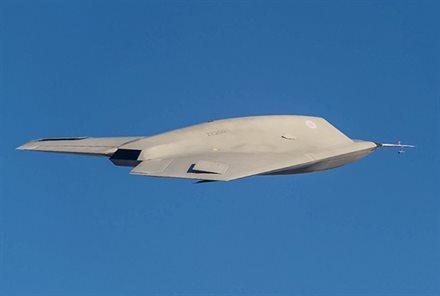VIDEO - Taranis…Out of the Black

The U.K. defense ministry and BAE Systems have given the white world the first glimpses behind the veil which has shrouded the now £185 million ($300 million) Taranis unmanned combat air vehicle (UCAV) technology demonstrator.
The program went black shortly after its rollout back in 2010, and little news has emerged about the project. First flight dates in 2011 and 2012 came and went until late in 2013 when the U.K. defense ministry unwittingly revealed in evidence to a defense committee that the aircraft had flown.

(All Photos: BAE Systems)
Now, the team behind Taranis - named after a Celtic god of thunder - have detailed some of the progress made by the project, but they are still limited by the high level of classification the program has been given.
First flight of the UCAV was carried out at 9.08 am on August 10, 2013 at an undisclosed location, widely believed to be the BAE Systems-run Woomera test range in South Australia, where the company has flown UAV demonstrators in the past. The flight followed taxi tests, carried out first at BAE’s Warton facility in Lancashire, U.K. surprisingly unnoticed by local enthusiasts who congregate regularly at the fence of the airfield. High speed taxi trials undertaken at the main test site in July.

A second flight was performed a week later, but officials will not say how many flights have been completed. Instead the flight test program is gated subject to the success of the previous phase. The aircraft is currently in the second phase of flight tests and BAE Systems are hopeful that approval for a third will be given in the coming weeks and will start later this year.
Nigel Whitehead, Group Managing Director, Programs and Support at BAE Systems said the program was as significant for the development of UCAV as the Experimental Aircraft Program (EAP) had been for the Eurofighter Typhoon.
What comes next is unclear, the aircraft will help inform the U.K.’s Future Combat Air System (FCAS) which is studying a mix of manned and unmanned capabilities for the U.K. beyond 2030 replacing the Typhoon.
And while officials say there was no direct link to the announcement by U.K. Prime Minister David Cameron and French President Francois Hollande on January 31 regarding the spending of £120 million on a joint Anglo-French feasibility study into a joint UCAV, the progress Taranis has made will no doubt play a part in those discussions too.
Videos, provided by BAE Systems show the Taranis during take-off, landing and in flight:
The program went black shortly after its rollout back in 2010, and little news has emerged about the project. First flight dates in 2011 and 2012 came and went until late in 2013 when the U.K. defense ministry unwittingly revealed in evidence to a defense committee that the aircraft had flown.

(All Photos: BAE Systems)
Now, the team behind Taranis - named after a Celtic god of thunder - have detailed some of the progress made by the project, but they are still limited by the high level of classification the program has been given.
First flight of the UCAV was carried out at 9.08 am on August 10, 2013 at an undisclosed location, widely believed to be the BAE Systems-run Woomera test range in South Australia, where the company has flown UAV demonstrators in the past. The flight followed taxi tests, carried out first at BAE’s Warton facility in Lancashire, U.K. surprisingly unnoticed by local enthusiasts who congregate regularly at the fence of the airfield. High speed taxi trials undertaken at the main test site in July.

A second flight was performed a week later, but officials will not say how many flights have been completed. Instead the flight test program is gated subject to the success of the previous phase. The aircraft is currently in the second phase of flight tests and BAE Systems are hopeful that approval for a third will be given in the coming weeks and will start later this year.
Nigel Whitehead, Group Managing Director, Programs and Support at BAE Systems said the program was as significant for the development of UCAV as the Experimental Aircraft Program (EAP) had been for the Eurofighter Typhoon.
What comes next is unclear, the aircraft will help inform the U.K.’s Future Combat Air System (FCAS) which is studying a mix of manned and unmanned capabilities for the U.K. beyond 2030 replacing the Typhoon.
And while officials say there was no direct link to the announcement by U.K. Prime Minister David Cameron and French President Francois Hollande on January 31 regarding the spending of £120 million on a joint Anglo-French feasibility study into a joint UCAV, the progress Taranis has made will no doubt play a part in those discussions too.
Videos, provided by BAE Systems show the Taranis during take-off, landing and in flight: